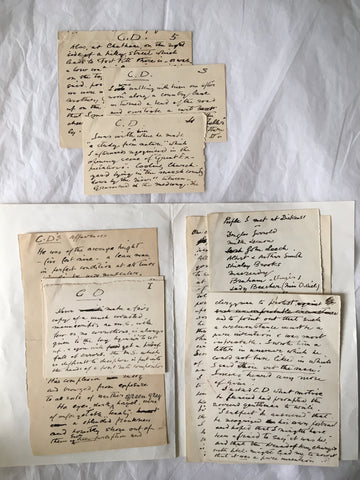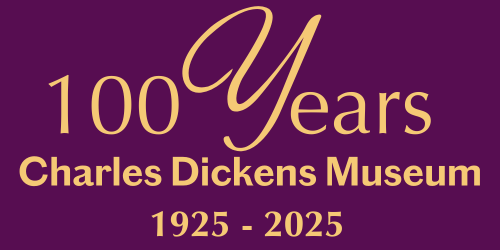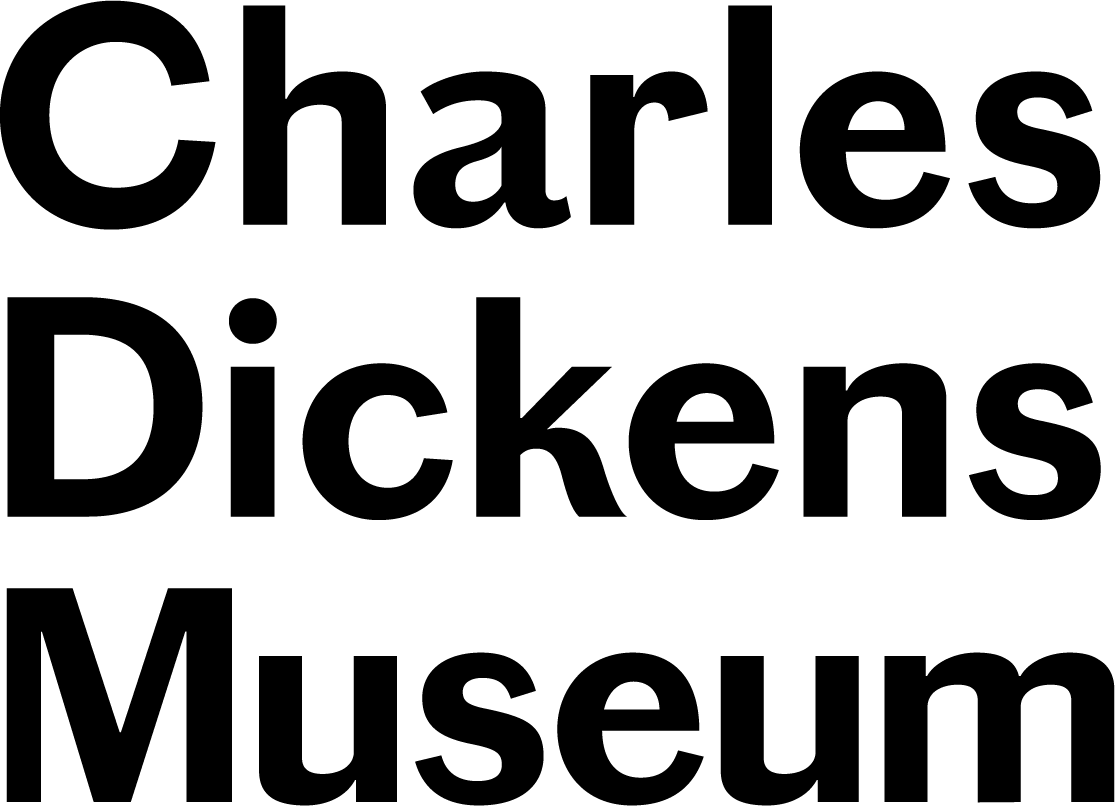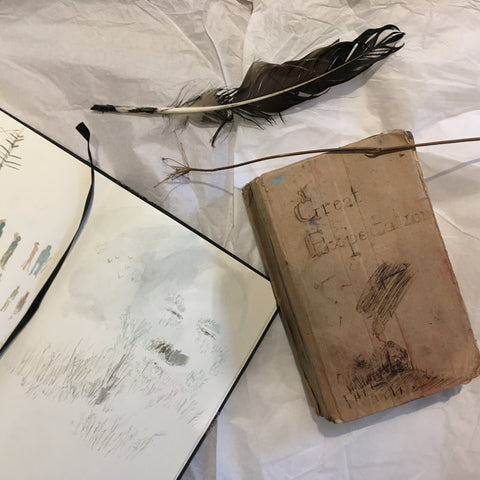The Dickens Reader and finding your Great Expectations by Louisa Price
Evocative, gothic artworks by illustrator Louise Weir have captivated our visitors over the last month in our current special exhibition, Expectations of the Past (13 March – 29 April 2018). These artworks are made of a mix of places and memories from the artist’s childhood along with the landscape and stories of Charles Dickens’s thirteenth novel, Great Expectations. The exhibition is a powerful reminder that reading is a personal experience and it is influenced by our memories and circumstances.
On display in the exhibition is a very rare book from our collection: it is a first impression, first edition of Great Expectations that was one of only 1000 printed. It sits alongside Weir’s version of the novel which is underlined throughout, battered, covered in ink and paint and with the spine coming away from the wrapper. I love the contrast of these two publications: the pristine first edition and the artist’s copy which is the embodiment of a reader’s personal, and loved Great Expectations.
Louise Weir’s copy of 'Great Expectations'.
Charles Dickens Museum, London.
It was the idea of Weir as a reader of Dickens that first appealed to me when she approached us in 2016 with her project. Her work demonstrates that cultural context, personal circumstances, memories, even the moment in which we choose to pick up the novel (to read it for the first time, or even read it again) impacts our reading experience.
This idea is beautifully illustrated in the artwork Magwitch/Uncle Fred. The work is about the first meeting between Pip and the convict Magwitch who warns the young boy what to expect if he betrays his trust. The story reminded Weir of her Uncle Fred, who when she was a child, would make her cry with frightening stories of ‘Billy Wind’ creeping into the house in the dead of night, squeezing through door cracks and window frames. She paired the piece with a poem constructed from lines from the novel.

'Magwitch/Uncle Fred', Louise Weir, 2012. Mixed media and digital print.
Image courtesy of Louise Weir.
Magwitch /Uncle Fred
A boy may lock his door
May be warm in bed
May draw the clothes over his head
May think himself comfortable and safe
But I will softly creep and creep his way and tear him open
The Open University’s Reading Experience Database is a fascinating resource charting the experiences of readers in the UK from 1450 to 1945. It contains over two hundred recollections of individuals reading Dickens and demonstrates the varying reactions people have had to his writing – from love to loathing. Mary Hammond sums up these Dickens Reader experiences in an essay, Charles Dickens and his readers.
The RED database contains many instances of those who were inspired to some creative output after reading. Weir is an example of this and at the Museum we regularly hear from others who have created artworks or written fan fiction inspired by Dickens’s literature. We were delighted to hear from students at Liverpool John Moores University who recently completed a module called ‘Digital Victorians’. For their project, they took Great Expectations as their inspiration and created a game, 'Monopoly: Great Expectations Edition.
In the Museum’s archive we hold the memoirs of the first illustrator of Great Expectations, artist Marcus Stone. Dickens had taken him for walks in Kent and discussed the locations in the novel.
“I was walking with him … when he made a “study from nature” which I afterwards recognised in the opening scene of “Great Expectations”. Cooling Churchyard, lying in the marsh country down by the river between Gravesend and the Medway. The low church wall, the flat wilderness beyond the church yard intersected with dykes and mounds … The ‘five little stone losenges’ arranged in a neat row; the graves of Pip’s five little brothers were all there.”

Charles Dickens Museum, London.
Like the first edition on display in the exhibition, Marcus Stone’s manuscript is thrilling because it makes us feel like we are closer to the Great Expectations that Dickens imagined. Weir’s artworks in Expectations of the Past reminds us that the author’s Great Expectations is just the beginning and his original ideas, settings and characters are the launch point for our own imaginings. As the novelist and critic Marcel Proust observed, ‘The end of a book’s wisdom appears to us as merely the start of our own’.
We hope that through this exhibition visitors will recall their first encounter with a Dickens story or perhaps a poignant re-reading. We would love to hear about any creative endeavours inspired by Dickens novels or to know what our visitors feel is their Great Expectations.
Blog by Louisa Price, Curator at the Charles Dickens Museum
Museum Blog
This blog takes you behind the scenes at the Charles Dickens Museum, giving fresh insight on everything from discoveries new and old in our collection, to exhibitions, events and learning initiatives.
You’ll be hearing from a variety of Museum staff and volunteers, as well as guest curators, academics, artists and Dickens enthusiasts. Why not join the debate and let us know you thoughts on the latest blog by using our hashtag #CDMBlog


